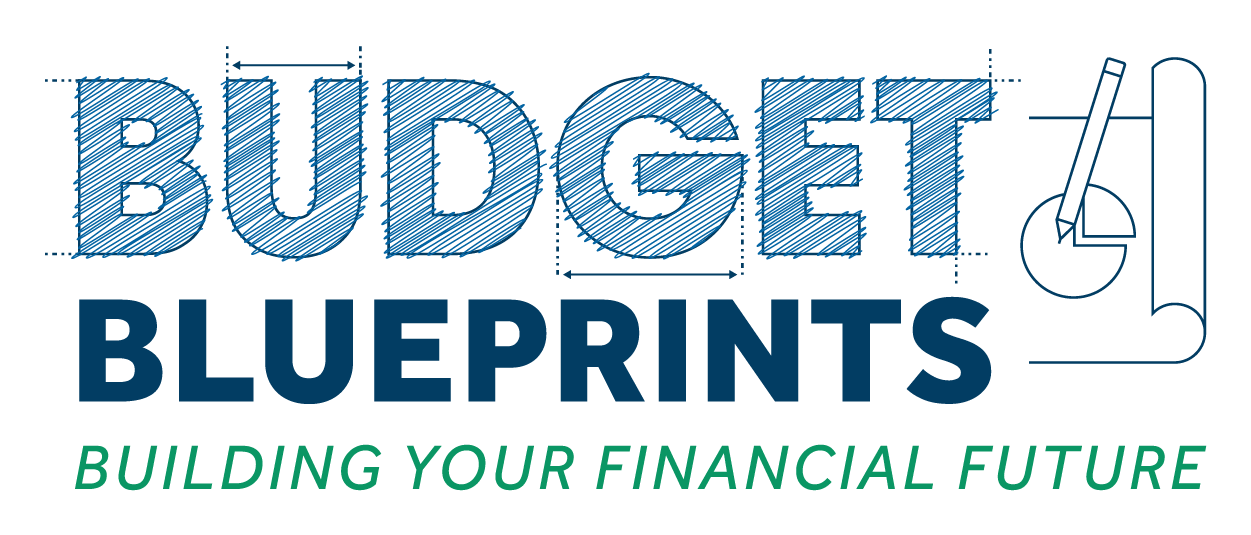Inside: Learn how to manage your budget with irregular income and plan ahead for irregular expenses throughout the year.
When talking with my financial counseling clients about budgeting, I emphasize the importance of anticipating potential items that might derail the budget. This plays out in a variety of ways. Sometimes that looks like taking inventory of unique line items specific to that month’s budget, such as birthdays, social events, or special purchases. Other times, it involves evaluating potential income fluctuations or irregular expenses.
For individuals whose income depends on hourly, commission, contract, or small business work, estimating a set income to budget with each month can be challenging. Ask any small business owner and they will tell you that some months are great while some months are not so great when it comes to their bottom lines.
On the other side of the budget are expected expenses that do not necessarily recur often enough to warrant their own line items in the monthly budget. These are items such as car registrations, personal property taxes, and quarterly pest control. They are expenses that are upcoming and expected but not regular. If you do not plan ahead for these items before they come due throughout the year, they can majorly throw off your monthly budget.
When it comes to budgeting, the goal is to create a standard budget template that can be easily replicated each month. Then, consider what could hinder you from staying on budget. Identify those items, and anticipate their occurrences. Irregular income and irregular expenses are great places to start!
How to budget with irregular income
Irregular income earners need to add a step into their budget planning when initially setting up their budgets. Instead of simply recording a set amount of income and jumping straight into estimating expenses, you first need to estimate the average income you expect to earn. This is a crucial first step! Without a correct income estimation, you run the risk of overspending when you plan out expenses. Thankfully, once you estimate your average income, you can ease right into expense forecasting in no time.
Getting started: Organizing your irregular income budget
Step one is to estimate the amount of income you reasonably expect to work with each month prior to setting up your budget. The goal is to find the income number that is most typical to use as our monthly income estimate moving forward. To help determine this, use our Estimating Irregular Income worksheet as a guide (it’s in our free resource library!) as you work through the next three steps!
- Estimate your expected monthly income. Review your monthly income details. How often are you paid? Do you work a set number of hours per month or does it fluctuate? What is the typical amount of income you expect to receive most months? Record these details and move on to step two.
- Determine average income per month. Now, open your bank statements and review the previous pay periods. Do the prior 2–3 months look similar to the typical income amount you determined in step one? If yes, then YAY, you have determined a realistic amount of income to budget with each month.
If there is variance or the amount of hours you work fluctuates widely, a safe bet is to use the lowest income-producing month as your typical monthly income amount. Or, if you feel confident in your income estimation going forward, you can also take the average of your last three months’ income and use that number as your typical monthly income.
- Create a specific “buffer” savings fund. Some months you may earn more or less income than the amount you just identified. What do you do with that extra money? Or, on the flip side, how do you pay your bills if your income is lower than expected? This is where a separate savings fund comes into play. As you earn income each month, you can move any excess cash into this income savings fund to create a buffer or safety net for low-income-producing months. When the fund gets to a certain point, you can move excess income into savings or put it toward debt.

Going forward: Monthly budgeting with irregular income
Now, let’s budget! Using whatever budget method you prefer — paper, spreadsheet, apps, etc. — set up your monthly budget.
- Estimate income. Plug in your average income as identified above.
- Estimate expenses. Forecast your upcoming expenses. These can include both regularly occurring expenses and purchases or payments that happen to come up this month.
- Review and adjust. As income arrives, utilize the “buffer” savings account to adjust income levels as needed to cover a budget surplus or deficit.
Here’s an example: Say I determine that my average monthly income is $3,000 per month. That is the number that I use to budget each month. Last month, I made $3,500, so I moved that extra $500 into the “buffer” account. This month, I earned $2,800, which will cause a budget deficit. Now, I utilize my “buffer” account and transfer $200 back to my checking account to make ends meet.
Choosing a budget method for irregular income
You can utilize any budget method for irregular income; however, I think that budgeting by paycheck works best! Because you constantly review the amount of actual income received, the budget-by-paycheck method helps you keep a close eye on income by breaking up the monthly budget into several mini-budgets. If you notice a particularly low paycheck, you will know you may need to utilize the “buffer” account. Learn how to budget by paycheck in this post!
Understanding irregular expenses
Moving on to the other pesky potential budget pitfall: irregular expenses. Irregular expenses are upcoming items in your budget that are not regular enough to earn their own line items in the monthly budget. You still want to budget for them, but you may not see the money leave your account for several months. These expenses can also be a bit sneaky because they are easy to forget about when you only pay for them a few times a year! Out of sight, out of mind, right?
Irregular expenses can be recurring expenses that come due at various intervals throughout the year. You may have quarterly pest control, bi-annual insurance premiums, or annual property tax bills. These expenses don’t have to be tied to a bill like in these examples. You can also utilize this planning method for fun recurring events like Christmas shopping or the annual family vacation.
Examples of irregular expenses
Irregular expenses can come in any shape or size. The key is to take inventory of all of the items you pay for throughout the year that aren’t already recorded in the monthly budget. Whether you discover a lot or a little, choose the top items for which you wish to set aside funds. In my budget, In our budget, my husband and I utilize irregular expense planning to plan for dog boarding. I know that at least 1–2 times per year we will board our two large dogs for the weekend and the costs can really add up! As you think through your irregular expenses, consider the following:
Bills
- Annual car registration
- Tax preparation costs
- Personal property taxes
- Quarterly pest control
- Quarterly garage collection
- Childcare
Subscriptions & memberships
- Amazon Prime
- Sam’s Club or Costco memberships
- Professional organization dues
- TV streaming services
Personal purchases
- Holiday shopping and decorations
- Vet appointments
- Pet boarding
- Family vacations or travel funds
- Medical visits and insurance
- Summer camps or activity fees
- Gifts for birthdays and anniversaries
How to budget for irregular expenses
Budgeting for these expenses is simple! You turn them into monthly “bills.” Once you determine all of your annual budgeting items, you can divide the cost up by 12 months and transfer that amount into savings each year.
Let’s break it down:
- Identify all expenses you want to plan for throughout the year. (Grab our helpful tracker for free!)
- Estimate individual and total expenses.
- Divide that number by 12 months.
- Treat that number like a bill in your budget and move the funds into a savings account each month.
- When the expense comes due, simply transfer the amount from your savings account to your checking account.
- Evaluate your expenses regularly. I like to review my irregular expense savings in January and determine if the amount I am currently saving is adequate. Items like taxes may have increased over the year, so take a moment to review your expenses each year!
For example:
| Expense | Total Amount ($) | Monthly Savings ($/12) |
| Christmas (annual) | $800 | $67 |
| Property taxes (annual) | $1000 | $83 |
| Pest control ($100 quarterly) | $300 | $25 |
| Total: | $175 |
Once you’ve identified all of your expenses and their monthly amounts, total these items and add an “irregular expense” line item into your budget. Transfer $175 each month into savings. Do this each month as if it is your own personal bill to pay.
Where to save your irregular income or expense allocations
Both of these budget strategies rely on a separate savings account to store funds in the interim. If you are budgeting with irregular income, choose an account that is easily accessible for your income “buffer” account in case you need to dip into it that month. Consider storing these funds at the same bank as your main checking account. Be sure to read the fine print to see if there are certain withdrawal limits during each reporting period. If your account has too restrictive transfer limits, then utilize a checking account instead for your income “buffer” account.
You can make your irregular expenses fund less accessible (like in an online savings account) because you can plan your withdrawals accordingly when the expense due date is drawing near.
In either case, if you are utilizing a savings account, I am a big fan of high-yield savings accounts. The interest rates are much more favorable than standard savings accounts. Consider storing your funds in a high-yield account to make the most of your money while it waits to be spent! Ask your bank if they have a high-yield account option. If they don’t, I personally love the online bank, ALLY. Ally wins extra points too because their savings accounts allow for sub-accounts, called “buckets”, to separate savings goals, making it ideal for irregular expenses and income you want to keep separate.
Need a little help? Ask our financial counselor!
If you made it to the end of this post and have questions on how to set up these budget methods, ask our financial counselor! We are here to help you build the financial life you want, and that often starts with building a budget! Check out our “Build-a-Budget” program for individualized help establishing a budget.
Related Posts
- What is a sinking fund?
- Budget Basics: 50/30/20 Method
- Budget Basics: Cash-Based Method
- Creating a Budget System that Works















What do you think?